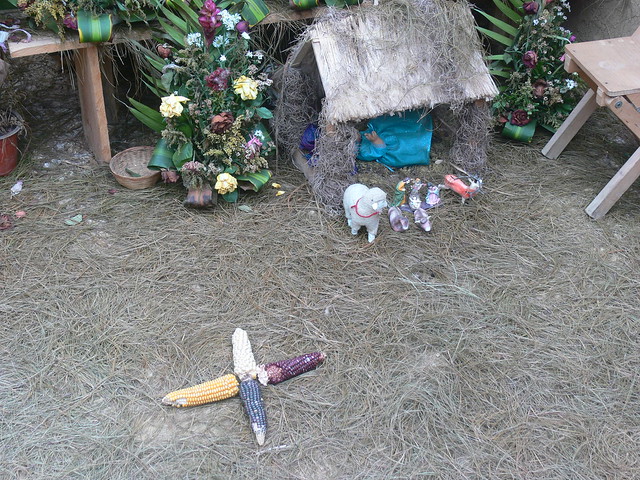The Mayan sun adorns the front of the church in San Juan Chamula, sharing space with Christian symbols. This mixing of religious symbols is common in Chiapas. When the missionaries arrived with the Spanish, they were surprised to see a cross as a religious symbol among the Mayans, assuming that Jesus had appeared in the Americas as well. They soon learnt that the Mayan cross represented the sacred Sabre tree with its long straight trunk and horizontal branches.
Clever missionaries realised that they could use the Mayan symbols to convert the people to Christianity, so they merged the two crosses in the locals’ minds and incorporated other local symbols in churches. Patrick, our guide, points out the mirrors on each of the representations of saints. They reflect the evil of the darker of the twin brother gods (who are compared to Cane and Abel). A few saints, who miraculously survived a fire that burnt down their church, are without mirrors as punishment for (in the locals’ minds) failing to do their duty.
 Locals prostrate themselves to the saints, afixing red, white, yellow and black candles to the floor in front. The candles represent the four main varieties of corn (food for the gods) and the four cardinal points of the compass.
Locals prostrate themselves to the saints, afixing red, white, yellow and black candles to the floor in front. The candles represent the four main varieties of corn (food for the gods) and the four cardinal points of the compass.
Patrick points out a man waving a chicken in front of a sobbing woman. He’s a shaman, trying to exorcise the spirit that’s causing her grief, and to capture it in the chicken, which will then be killed and buried so that it can’t affect anyone else. The whole process can take hours, but as we watch, the shaman grabs the chicken’s neck and twists. I’m not sure that I feel lucky to have seen it.